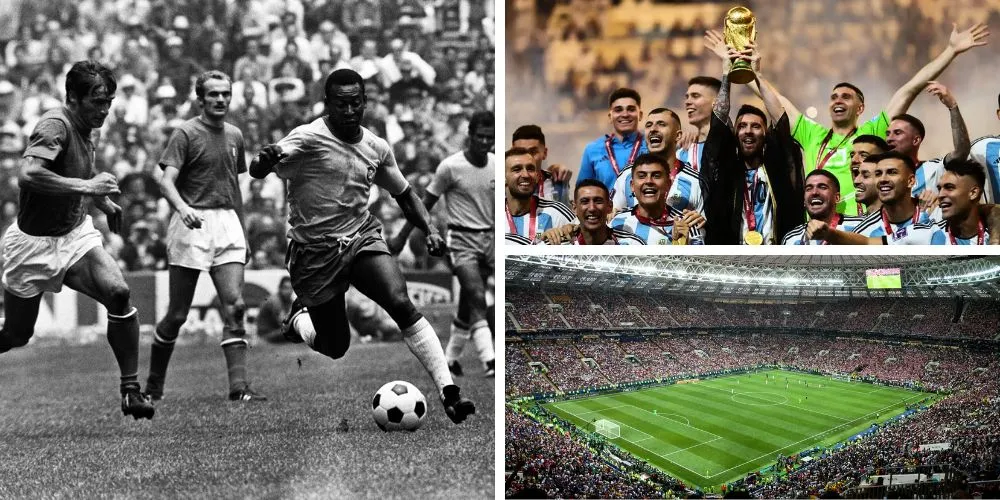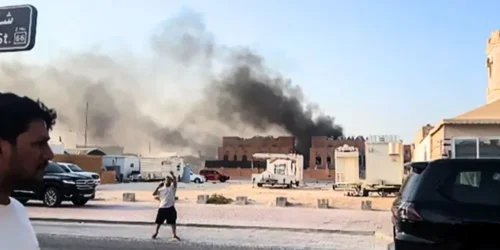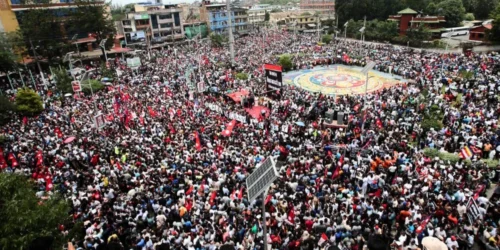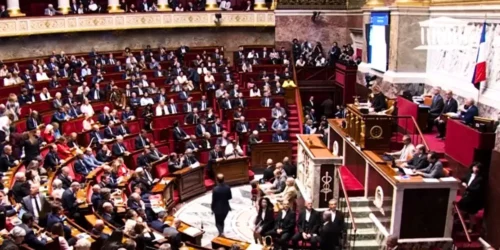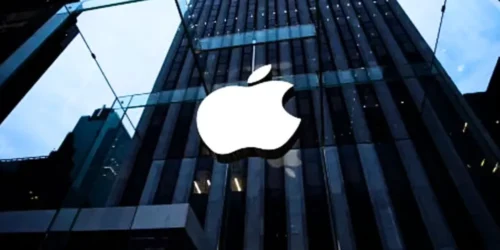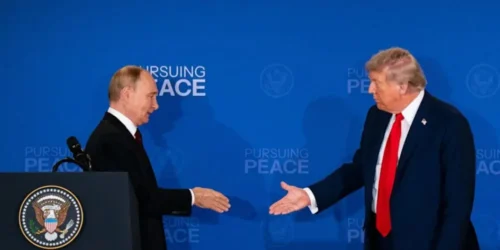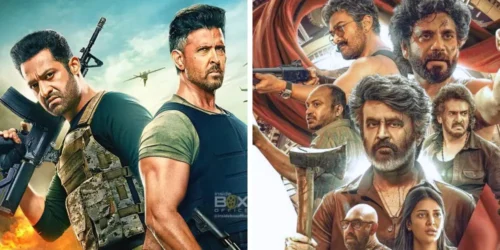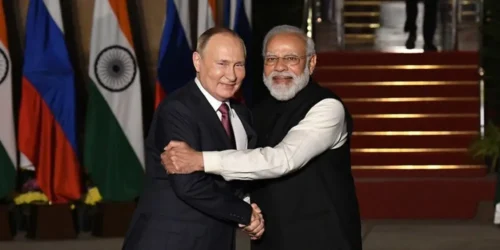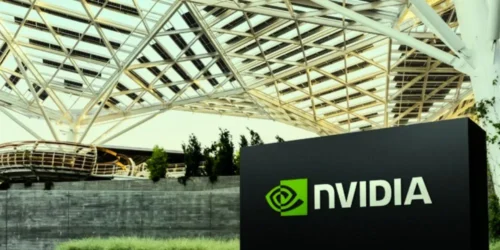Every four years, our planet performs a strange and magical ritual. For one frantic, vibrant month, the normal rhythms of life are suspended. Time zones bend—office productivity plummets. Geopolitical rivalries are sublimated into a 90-minute drama on a rectangle of grass. Wars are paused. Strangers embrace in the streets. A single, unified conversation, spoken in the universal language of cheers and groans, erupts across the globe. This is the FIFA World Cup.
It is more than a sporting event. It is a phenomenon. It is a global pilgrimage, a traveling carnival of national pride, a multi-billion-dollar commercial behemoth, and a deeply emotional human drama all rolled into one. It is a force powerful enough to topple governments, to forge national identities, and to make grown men and women weep with a joy or a sorrow so profound it feels almost spiritual.
But how did a simple game, a contest of 22 people kicking a ball, become the most-watched and most culturally significant event in human history? And what does this quadrennial fever dream tell us about ourselves—about our need for tribe, our love of narrative, our capacity for sublime artistry, and our susceptibility to corruption and controversy?
This is a case study of that phenomenon. We will not just recount famous goals or classic matches. We will dissect the World Cup as a complex, multi-layered ecosystem. We will explore its power as a nation-building tool, its staggering economic and political machinery, and its uncanny ability to produce moments of transcendent, unscripted human drama. Our primary lens will be the two most recent and most controversial tournaments—Brazil 2014 and Qatar 2022—that perfectly encapsulate the beautiful, brutal, and often paradoxical nature of the modern World Cup.
This is the story of how a ball and a patch of grass became the stage for our planet’s greatest spectacle, a story of passion, power, and the relentless, complicated business of selling a global dream.
The Anatomy of a Global Obsession – Why We Watch
Before we can understand the business and politics of the World Cup, we must first understand its primal, emotional power. Why does this tournament, more than the Olympics or any other event, captivate a global audience of billions? The answer lies in a potent cocktail of human psychology and sporting design.
The Power of the Tribe: The Flag Made Flesh
At its core, the World Cup is a festival of nationalism. But it is nationalism in its most benign and passionate form. It is not about borders or politics or ideology; it is about a shirt, a song, a flag. For one month, the abstract concept of “your country” is made thrillingly real. It is embodied by eleven players on a field. Their victory is your victory. Their defeat is your heartbreak.
The tournament provides a rare, unifying focal point for nations that are often deeply divided. In a country like Brazil, where society is fractured by class and politics, the iconic yellow jersey of the Seleção becomes a unifying symbol. For that 90 minutes, everyone is Brazilian. In immigrant nations like France or the United States, the team becomes a powerful symbol of a new, multicultural identity. In this place, people from diverse backgrounds can come together under a single banner.
This tribal identification is visceral. It taps into our deepest, most ancient need to belong to a group, to be part of an “us” against a “them.” But because the context is sport, the “them” is not an enemy to be destroyed, but a rival to be respected and, hopefully, defeated. It is a safe and exhilarating way to experience the powerful emotions of collective identity.
The Perfect Narrative Engine: Simplicity and Scarcity
The global appeal of football (or soccer) lies in its profound simplicity. You don’t need to understand complex rules to grasp the objective: get the ball in the net. A child in a Rio favela and a banker in a Tokyo skyscraper can understand the drama of a goal with the same instinctive clarity. This low barrier to entry makes it the world’s most accessible and universal sporting language.
The World Cup then layers a brilliant narrative structure on top of this simple game.
- Scarcity and Consequence: Unlike league football, which is a long, grinding season, the World Cup is a sprint. It happens only once every four years. For players, it is the absolute pinnacle of their career, a rare chance at immortality. For fans, the wait builds an immense sense of anticipation. Every single match has a life-or-death consequence. In the knockout stages, a single mistake, a single moment of brilliance, can be the difference between glory and a four-year wait for another chance. This creates an almost unbearable level of dramatic tension.
- The David vs. Goliath Dynamic: The tournament is structured to produce classic underdog stories. While the traditional powerhouses of Brazil, Germany, and Argentina are always present, the World Cup inevitably provides moments when a smaller nation stuns a giant. Think of Cameroon defeating reigning champions Argentina in 1990, or South Korea’s incredible run to the semi-finals in 2002. These moments of giant-killing are essential to the tournament’s magic, as they reinforce the idea that anything is possible.
- The Global Cast of Characters: The tournament is a showcase of the world’s diverse cultures and playing styles. You have the flair and artistry of the Brazilians, the tactical discipline of the Italians, the physical power of the Germans, the relentless tenacity of the Uruguayans. Each team brings its unique flavor, creating a rich tapestry of contrasting styles and philosophies.
The Unscripted Drama: Moments of Sublime Artistry and Human Frailty
For all the tactics and strategies, the enduring power of the World Cup lies in its ability to produce moments of pure, unscripted human drama that sear themselves into the collective memory of the planet. These are moments that transcend sport.
- The Moment of Genius: Diego Maradona’s “Goal of the Century” against England in 1986, a slaloming, hypnotic run that seemed to defy the laws of physics. Zinedine Zidane’s two towering headers in the 1998 final were a moment of national catharsis for France. These are not just goals; they are works of art, created spontaneously under the most intense pressure imaginable.
- The Moment of Heartbreak: Roberto Baggio, the “Divine Ponytail,” missing the final penalty in the 1994 final, is a tragic hero frozen in a moment of despair. The Brazilian team’s complete emotional collapse in their 7-1 semi-final defeat to Germany on home soil in 2014 was a moment of national trauma known as the Mineirazo.
- The Moment of Controversy: Maradona’s infamous “Hand of God” goal in that same 1986 match. Zinedine Zidane’s shocking headbutt in the 2006 final was a moment of madness that ended a legendary career in disgrace. These moments of human frailty are as much a part of the tapestry as the moments of genius.
It is this potent combination—tribal identity, narrative tension, and unscripted drama—that makes the World Cup a global obsession. It is a formula that FIFA, the world’s governing body for football, has learned to package, market, and sell with ruthless efficiency.
The Golden Goose – The Staggering Business of the World Cup
Behind the passion and the poetry, the World Cup is a machine for making money. It is a multi-billion-dollar enterprise that has transformed FIFA from a modest non-profit association into one of the most powerful and controversial sporting organizations on Earth. The business model is built on two colossal pillars: broadcasting rights and corporate sponsorship.
Selling the Spectacle – The Broadcasting Rights Bonanza
The single largest source of revenue for the World Cup is the sale of television broadcasting rights. FIFA controls the global broadcast feed and sells the exclusive rights to show the tournament to television networks in every country around the world.
This is a fierce and incredibly lucrative bidding war. For a national broadcaster, securing the World Cup rights is a massive prize. It guarantees them a month of astronomical ratings, huge advertising revenue, and cultural relevance. In countries like the United States, where football’s popularity has been growing, networks like Fox and Telemundo have paid billions of dollars for the rights to the tournament.
FIFA’s genius has been to understand the power of its product. They know that the World Cup is “must-see TV” on a planetary scale. It is one of the few remaining cultural events that can command a massive, live, appointment-viewing audience in an age of fragmented, on-demand media. This allows them to charge astronomical prices for the broadcast rights, creating a river of gold that flows directly into their Zurich headquarters. For the 2022 World Cup cycle, FIFA’s revenues, primarily from broadcasting, were a staggering $7.5 billion.
The Corporate Embrace – The Power of Sponsorship
The second pillar of the business model is corporate sponsorship. The World Cup offers global brands a unique and unparalleled marketing platform. For one month, they can associate their products with the passion, excitement, and universal appeal of the tournament.
FIFA has created a tiered system of sponsorship.
- FIFA Partners: This is the highest level, a small group of global mega-brands (like Coca-Cola, Adidas, and Visa) who pay hundreds of millions of dollars for a comprehensive package of rights that extends across all FIFA tournaments. They get stadium advertising, exclusive marketing rights in their product category, and the right to use the official World Cup logos in their global campaigns.
- World Cup Sponsors: This second tier includes companies (like Budweiser and McDonald’s) that buy rights specific to the World Cup tournament itself.
For these companies, the investment is immense, but the payoff can be huge. A clever World Cup ad campaign can become a cultural moment in its own right. Sponsoring the tournament allows a brand like Coca-Cola to wrap itself in the flag of global unity and joy, while a brand like Adidas can showcase its boots on the feet of the world’s greatest players. It is a powerful, if expensive, way to build global brand recognition.
The Host Country’s Gamble: The Politics and Economics of Staging the Dream
While FIFA reaps the financial rewards, the host nation takes on an enormous burden and a massive gamble. The process of bidding to host the World Cup is a fierce, multi-year political campaign. Nations spend millions on glossy bid books and intense lobbying efforts to win the votes of the members of FIFA’s executive committee.
If they win, the real work begins. The host nation is responsible for building or renovating a dozen state-of-the-art stadiums, upgrading airports and transportation infrastructure, and providing security for millions of visiting fans. The costs are astronomical, often running into the tens of billions of dollars.
The promised return on this investment is a mix of tangible and intangible benefits.
- The Economic Boost (The Theory): The theory is that the influx of tourists, the construction boom, and the global media exposure will provide a massive short-term boost to the host’s economy.
- The “Soft Power” Dividend: Hosting the World Cup is a massive exercise in nation-branding. It is a chance for a country to present a new, modern face to the world, to showcase its culture, and to boost its international prestige. This was a key motivation for countries like South Africa (2010) and Brazil (2014).
- The Infrastructure Legacy: The hope is that the new stadiums, airports, and subways built for the tournament will serve the country for decades to come.
As we will see in the cases of Brazil and Qatar, this gamble is incredibly risky. The promised economic benefits often fail to materialize, and the legacy can be one of white elephant stadiums and massive public debt. The dream of hosting the World Cup can easily turn into a financial and political nightmare.
The Brazilian Paradox – A Case Study in Passion and Protest (Brazil 2014)
In 2007, when Brazil was awarded the right to host the 2014 World Cup, the nation erupted in celebration. It seemed like the perfect marriage. Brazil is the spiritual home of football, the land of Pelé and the five-time world champions. The country was in the midst of an economic boom, a rising global power ready to take its place on the world stage. The World Cup was meant to be its ultimate coming-out party.
Seven years later, as the tournament kicked off, the mood had soured dramatically. The largest street protests in a generation rocked the country. The very people who loved football the most were now marching against the World Cup. The slogan on their banners was stark: “We want hospitals and schools, not World Cup stadiums.”
The story of the 2014 Brazil World Cup is a powerful case study of the immense social and political risks of hosting the tournament, and the massive disconnect that can emerge between the promises of FIFA and the reality on the ground.
The Broken Promises: The Soaring Cost of the Spectacle
The initial budget for the tournament was estimated at around $1 billion. The final cost ballooned to over $15 billion, making it the most expensive World Cup in history at the time. This massive expenditure went towards building or renovating 12 stadiums, many of them in cities with no major football clubs to use them after the tournament.
- The White Elephants: The most notorious example was the Arena da Amazônia in the jungle city of Manaus. A stunning, architecturally ambitious stadium was built at a cost of over $300 million. After hosting just four World Cup matches, it has been left with virtually no purpose, a gleaming, empty monument to government waste.
- The Corruption: The massive construction projects became a feeding frenzy for corruption. Construction companies, politicians, and officials were later implicated in vast bid-rigging and kickback schemes, with a significant portion of the public money being siphoned off into private pockets. This was a key part of the larger “Operation Car Wash” scandal that would later engulf the country.
The Social Cost: A Tale of Two Brazils
While the government was spending billions on state-of-the-art stadiums, the country’s public services—its hospitals, its schools, its public transportation—were crumbling from decades of underinvestment. The contrast was galling.
A deep sense of betrayal fueled the protests. The people saw the government prioritizing a one-month party for foreign tourists over the basic needs of its citizens. The spectacle of the World Cup was highlighting, in the starkest possible terms, the deep inequalities of Brazilian society. The tournament was not for them; it was for the wealthy elites in the corporate boxes and the international visitors.
The situation was made worse by the forced evictions of thousands of families from favelas (slums) to make way for new infrastructure projects, and the heavy-handed, often brutal, police response to the protests. The dream of a unifying national celebration had curdled into a reality of division, anger, and social conflict.
The On-Field Climax: The 7-1 Trauma
The final, bitter irony came on the football pitch itself. The Brazilian national team, carrying the immense weight of a nation’s hopes, reached the semi-finals. There, in their home stadium, they suffered the most humiliating defeat in their history, a 7-1 thrashing at the hands of Germany. The match, known as the Mineirazo, was more than a loss; it was a national trauma, a collective psychological breakdown played out on a global stage.
It felt like a fittingly tragic end to a tournament that had promised so much and delivered so much pain. The Brazil 2014 case was a stark warning. It showed that passion for the game could not paper over deep-seated social and economic problems. It proved that hosting the World Cup could be a catalyst not for unity, but for exposing a nation’s deepest wounds.
The Desert Mirage – A Case Study in Geopolitics and Human Rights (Qatar 2022)
If the Brazil World Cup was a story of a football-loving nation buckling under the weight of the spectacle, the 2022 World Cup in Qatar was something else entirely. It was a story that stretched the very definition of what a World Cup host could be and exposed the dark, geopolitical underbelly of FIFA’s decision-making process.
In 2010, when the tiny, gas-rich desert emirate of Qatar was awarded the 2022 tournament, beating out bids from countries like the United States, Australia, and Japan, the football world was stunned. Qatar had no footballing tradition, a population of less than 3 million, and summer temperatures that made playing football impossible. The decision seemed to defy all logic.
It immediately sparked a firestorm of controversy that would rage for the next 12 years. The Qatar 2022 case is a study in how the World Cup can become a tool of international statecraft and a flashpoint for some of the most contentious issues of our time.
The Allegations of Corruption: A Tainted Prize?
Widespread allegations of bribery and corruption immediately plagued the decision to award the World Cup to Qatar. Investigations by journalists and law enforcement agencies in several countries uncovered a web of suspicious payments and backroom deals. The U.S. Department of Justice would later indict several senior FIFA officials, alleging they had accepted bribes in exchange for their votes for Qatar.
While Qatar has always denied the allegations, the cloud of corruption has never lifted from the 2022 tournament. It created a deep and lasting cynicism about FIFA’s decision-making process, suggesting that the World Cup was not awarded on merit, but was sold to the highest bidder.
The Human Cost: Building a Dream on the Backs of Migrant Workers
To host the tournament, Qatar had to build an entire country’s worth of infrastructure from scratch. They built seven new state-of-the-art stadiums, a new airport, a new metro system, and dozens of new hotels. This monumental construction project was carried out by a massive army of migrant workers, primarily from South Asia and Africa.
Soon after the construction began, horrific reports began to emerge about the conditions these workers faced. They were subject to the kafala system, a form of indentured servitude that tied a worker’s legal status to their employer. They had their passports confiscated, were forced to live in squalid labor camps, and worked long hours in the brutal desert heat.
The death toll was staggering. While the official Qatari figures were low, investigations by media outlets like The Guardian estimated that over 6,500 migrant workers had died in Qatar in the decade since it was awarded the World Cup. The true figure will likely never be known.
The human rights issue became the defining controversy of the tournament. It posed a profound moral dilemma for fans, players, and sponsors. How could one enjoy the beautiful game when it was being played in stadiums built on a foundation of human suffering? It forced a global conversation about the responsibility of sports organizations to uphold basic human rights.
The Culture Clash: A Collision of Values
The choice of Qatar also created a head-on collision between the conservative Islamic values of the host nation and the more liberal, international culture of the football fans who would be visiting. The issues of alcohol consumption (which is heavily restricted in Qatar) and the rights of LGBTQ+ fans (homosexuality is illegal in Qatar) became major flashpoints.
The debate came to a head over the “OneLove” armband, a symbol of inclusion that the captains of several European teams planned to wear. In a last-minute decision, FIFA threatened to issue yellow cards to any player wearing the armband, forcing the teams to back down. The incident was seen as a capitulation to the host nation’s values and a betrayal of FIFA’s own stated commitment to inclusivity.
The Tournament as Statecraft: A “Soft Power” Supernova
Despite the endless controversy, for Qatar, hosting the World Cup was a massive geopolitical success. The tiny nation used the tournament as a “soft power” supernova, a way to project its influence and announce its arrival as a major player on the world stage.
- It diversified its economy away from a sole reliance on gas.
- It showcased its modernity and ambition to a global audience of billions.
- It built strategic relationships with countries and corporations around the world.
For 12 years, the world debated, criticized, and condemned Qatar. But when the tournament began, the world watched. The football itself was spectacular, culminating in a legendary final between Argentina and France. For Qatar, the controversies were the price of admission. They had successfully used the world’s greatest sporting event to put themselves at the center of the global map.
Conclusion: The Beautiful, Broken Game
The World Cup is a mirror. It reflects the very best of us—our capacity for collective joy, our love of artistry, our ability to find common ground in a simple game. It produces moments of pure, transcendent beauty that unite a fractured planet in a shared experience. The image of Lionel Messi, after a lifetime of striving, finally lifting the trophy for Argentina in 2022, is a story of human perseverance that resonates far beyond the world of sport.
But the mirror is also cracked. It reflects our deepest flaws. It reflects the corrosive influence of money and power, the dark arts of geopolitics, the exploitation of the vulnerable, and our willingness to sometimes look away from uncomfortable truths in our hunger for spectacle.
The stories of Brazil 2014 and Qatar 2022 are two sides of the same, complex coin. Brazil shows us the internal risks of hosting—the danger of a nation’s passion being exploited, of public funds being diverted, of a dream of unity revealing deep social divisions. Qatar shows us the external risks—the danger of the tournament becoming a tool for authoritarian states to “sportswash” their reputations, of the beautiful game being used to legitimize systems that stand in opposition to the very values of openness and fair play it is supposed to represent.
And at the center of it all stands FIFA, the flawed custodian of this global dream. It is an organization that has presided over the game’s incredible global growth while also being plagued by scandals that have shaken its moral authority to the core.
The great challenge for the future of the World Cup is to reckon with this duality. Can the tournament continue to be a force for global unity while also addressing the profound ethical and social questions it raises? Can FIFA reform itself into an organization that is as committed to human rights and transparency as it is to maximizing its revenues?
The answers are uncertain. The next World Cup, in 2026, will be a sprawling, continent-wide affair, hosted by the United States, Canada, and Mexico. It will be the biggest tournament yet, a massive commercial and logistical undertaking. It will no doubt produce its unforgettable moments of drama and its own new set of controversies.
Because that is the nature of this strange and wonderful event, it is beautiful and it is broken. It is a source of pure joy and profound unease. It is a fever dream that we, as a planet, choose to indulge in every four years, because for all its flaws, it reminds us of something essential: that even in a world of deep divisions, we can all, for one brilliant month, be united by the simple, perfect drama of a ball hitting the back of a net. The game goes on.

